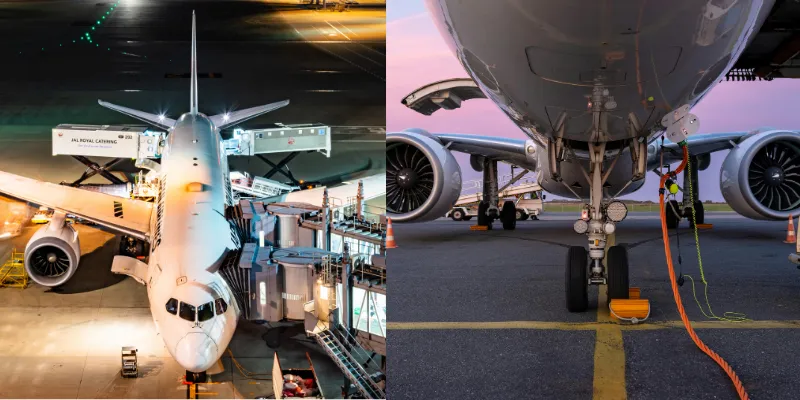

Not all internships lead to success—but the right approach can set your aviation career on the fast track. As a B2 engineer focused on avionics and electrical systems, your role is vital.
This blog shares 4 smart, real-world tips to help you stand out, grow faster, and truly take off.
Internships aren’t just about standing nearby and watching senior engineers work. If you really want to grow as a B2 Aircraft Maintenance Engineer, you need to shadow with intent. That means not only observing tasks but understanding why and how they are done.
Learn to Read Patterns, Not Just Checklists
Most students focus on ticking boxes from the maintenance checklist. But great engineers look beyond the list—they notice patterns in system behavior, repeat faults, and the logic behind every fix. Watch how experienced engineers troubleshoot issues. See how they spot faults early, even before a checklist tells them to.
Ask Insightful Questions
Don’t be afraid to speak up—but make sure your questions show thought. Instead of asking, “What are you doing?”, try “Why did you choose that test point first?” or “Is this a common issue in this aircraft model?” These kinds of questions earn respect from senior engineers and help you learn faster.
Pro Tip: Keep a Learning Journal
Start a small notebook or a digital note where you track:
Over time, this becomes your personal avionics guidebook, filled with real-world insights no classroom can offer.
One of the best ways to learn during your internship is to step up and get involved—especially when a task looks complicated. Don’t just wait for someone to assign you an easy job. Raise your hand and ask if you can help with advanced work, like troubleshooting faults or inspecting avionics systems.
Why confidence with wiring diagrams and troubleshooting pays off
Wiring diagrams can look confusing at first. But don’t avoid them—they're your best friend as a B2 engineer. The more you practice reading these diagrams, the better you’ll get at understanding how systems connect and where things go wrong. Troubleshooting skills grow with time, but only if you start early.
When you build confidence in solving faults, you become valuable to the team—even as an intern. You’ll notice issues others might miss and suggest solutions that make a real difference.
The importance of safety, procedure, and initiative combined
Volunteering doesn’t mean rushing in without thinking. It means asking smart questions, following proper procedures, and always keeping safety first. Before touching any component, make sure you understand the system, follow the Aircraft Maintenance Manual (AMM), and get approval from a licensed engineer.
Your initiative matters—but your respect for procedure and safety is what builds trust with your seniors.
Bonus Tip: Practice fault isolation techniques even when observing.
Not getting hands-on today? No problem—you can still learn a lot. While observing others fix a system, try doing a “mental fault trace” on your own. Ask yourself:
This habit sharpens your thinking and prepares you for the moment when you do get the gloves on.
In aviation, your words matter just as much as your tools. As a B2 intern, you’re not just fixing wires or testing systems—you’re helping keep aircraft flying safely. That’s why learning how to speak clearly and professionally is one of the most powerful skills you can develop.
Learn to communicate your findings like it's a release-to-service statement
Instead of saying, “It looks fine now,” try saying,
“Tested and replaced faulty relay on autopilot control system. Post-replacement test passed per AMM reference. Aircraft ready for service.”
This kind of clear, structured statement shows your professionalism and builds trust with your team.
Connect your maintenance work to aircraft performance and safety
Every wire you check or system you inspect impacts how the aircraft performs in the sky. Think like a pilot:
When you see the big picture, you work smarter and safer.
Tip: Talk to flight crews or operations staff when possible
Pilots and operations staff often notice issues first. If you get the chance, ask questions like:
Their feedback helps you learn faster and align your work with real-world needs.
When you're an intern in aircraft maintenance—especially in a B2 role—it's easy to think that just meeting people is enough. But the truth is, building a reputation is more valuable than collecting names or contacts.
Create relationships with senior techs, QA officers, and instructors
Start by creating real connections with the people around you—especially senior technicians, QA officers, and instructors. These professionals have years of experience, and they’re often the ones who recommend interns for jobs later. Be respectful, ask smart questions, and show that you’re eager to learn.
Offer help during crunch time (AOG or turnaround scenarios)
Offer your help during busy times like AOG (Aircraft on Ground) or quick turnaround scenarios. These are moments when the team needs all hands on deck. If you’re reliable and show up when it’s tough, people notice—and they’ll remember.
Tip: The best way to build your resume? Show a strong work ethic and be someone others can count on. Be on time. Follow procedures. Stay positive. These simple things go a long way in building trust—and that’s the real key to growing your future in aviation.
These four smart tips can speed up your learning and help you grow in your aviation career. Remember, your internship is the base of your license and your future reputation.
What’s one thing you’ve done during your internship that helped you, or a mistake you learned from? Share it with us!